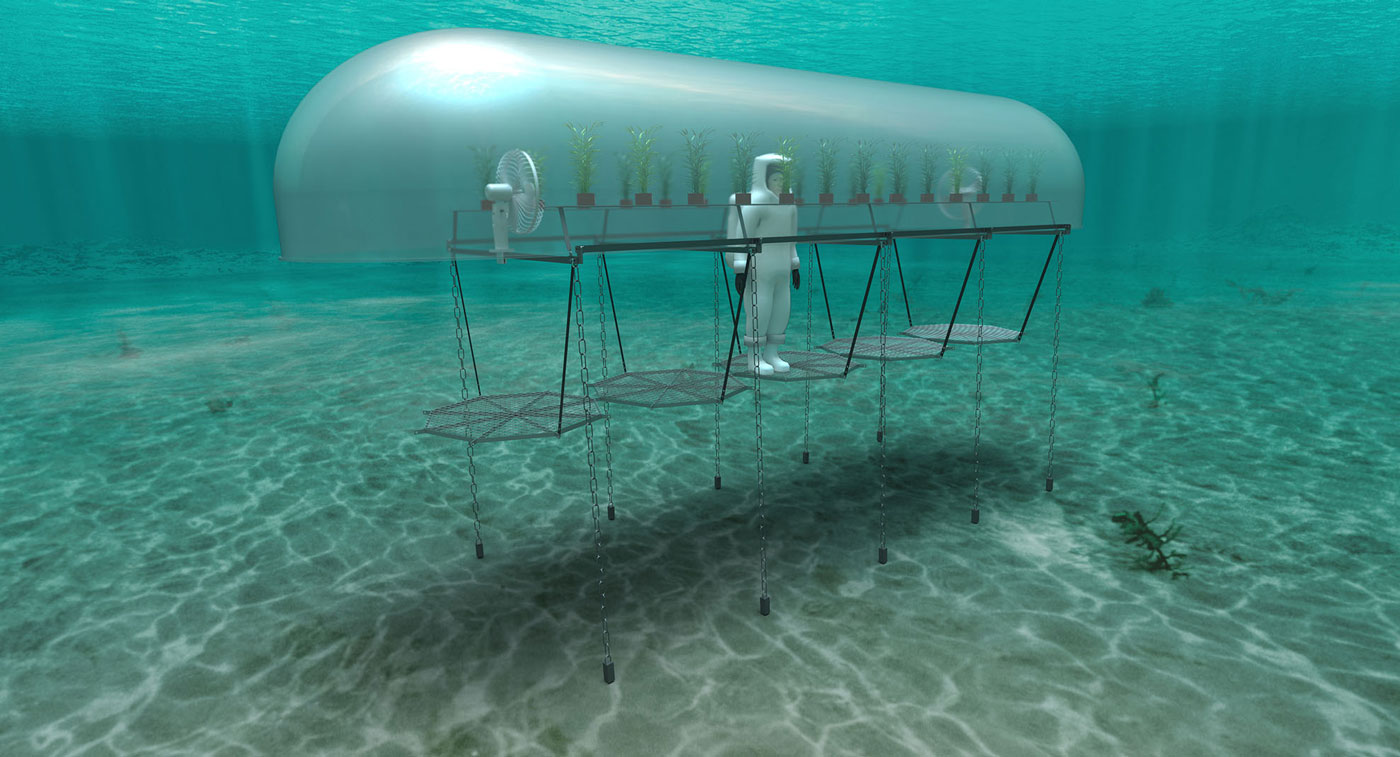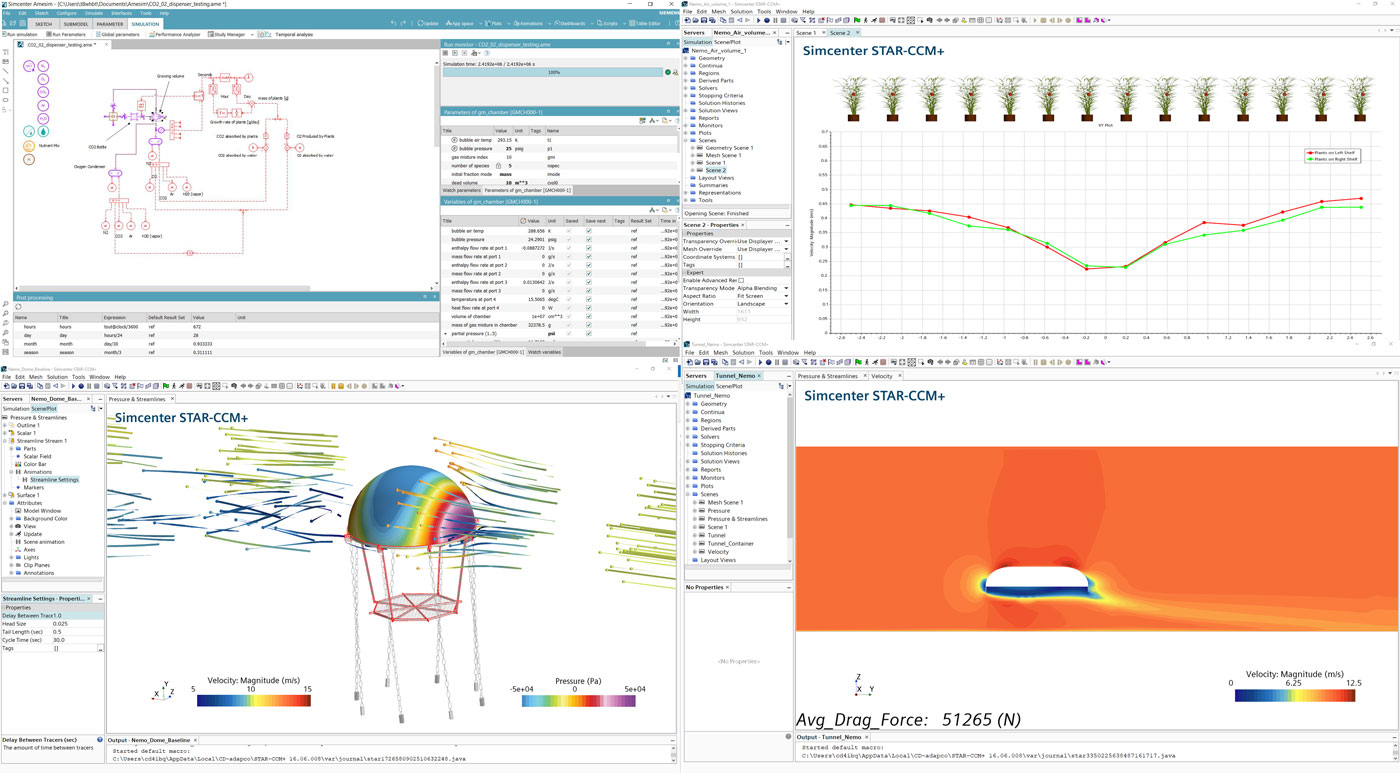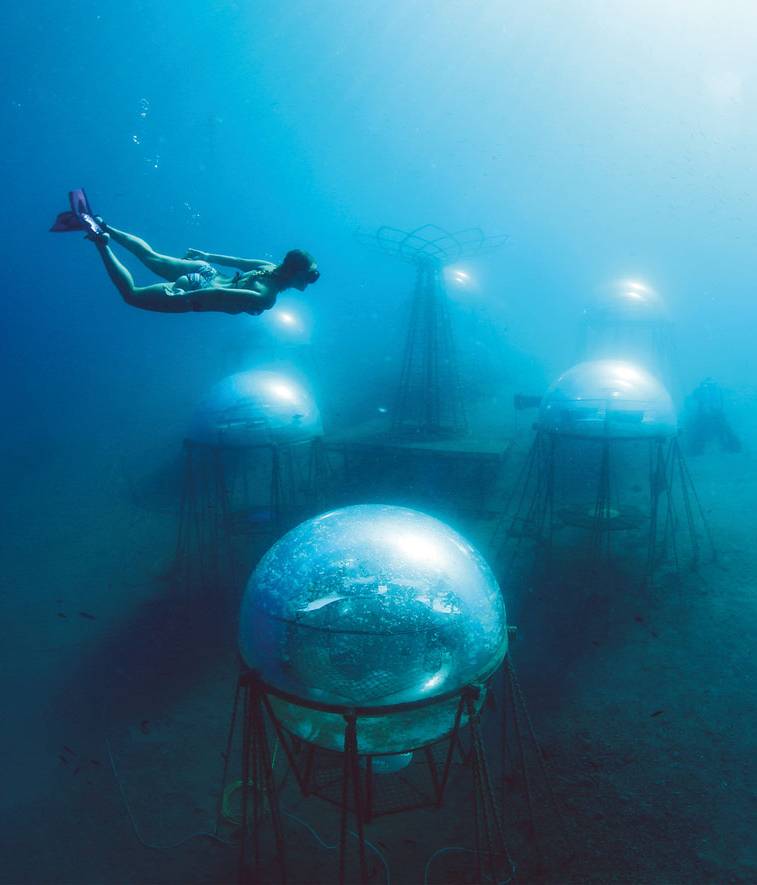EXPLORE THE POSSIBILITIES
Nemo’s Garden
Once upon a time, there was a mesmerizing digital twin and a magical underwater garden…
By Jenn Schlegel
Image provided by Nemo's Garden
It is not every day that inspiration strikes. So when you happen upon a story like Nemo’s Garden and the save-the-planet potential of a simple underwater farm, you can’t help but dive right in. Because like many a classic fairy tale, this story shows the magical power of dreaming big.
Today, just off the coast of Noli, Italy (between Genoa, Italy and Nice, France), you will find Nemo’s Garden. Visible from the surface, it lies about 40 meters from the local beach at a depth of 6 to 10 meters.
But the real story started in the summer of 2012, when Sergio Gamberini, founder and president of the Italian diving equipment manufacturer, Ocean Reef Group, was vacationing on the Italian Riviera. Between dives, beach strolls and chats with friends about his other passion – gardening, he was struck by the most unusual idea: why not try to grow basil underwater? A couple of phone calls later and some help from his team at Ocean Reef Group, and he was experimenting with creating air-filled transparent biospheres 6 meters below the sea. That summer they successfully grew underwater basil.

Built using Siemens NX software, the comprehensive digital twin of Nemo’s Garden also includes the inner workings of the biosphere and its environment thanks to integrated Siemens Simcenter software. This advanced simulation can test out detailed case scenarios of any future situation.
10 years later
Today, Nemo’s Garden’s is a viable underwater greenhouse complex and pressurized underwater research lab. Consisting of 6 acrylic balloon structures that hold approximately 2,000 liters of air and float at different depths, these prototype biospheres harness all kinds of positive environmental factors from the ocean: temperature stability; evaporative water generation; CO2 absorption; an abundance of oxygen; and the ultimate answer to every gardener’s bête noire -- natural protection from bugs and pests.
Joined on this magical quest by his son, Luca Gamberini, Sergio Gamberini began to grow Nemo’s Garden with a team of like-minded engineers, divers and scientists working to prove the viability of cultivating herbs, fruit and vegetables underwater. The first underwater basil was followed by lettuce in 2014. (The team feasted that summer on biosphere-grown salad topped with pesto made from their own biosphere basil. Already the dream was coming true.) Since then, the team has grown 50 different crops, including a variety of herbs, tomatoes and even strawberries. The team also discovered that plants grown in the biospheres are nutritionally richer than those grown traditionally.
Underwater basil for all
Recent stormy winters and the pandemic did set the project back a bit, but the team persevered. Nemo’s Garden definitely worked, and they wanted to take it a step further than beachside Noli, Italy. Could you replicate this idea easily so that others could create and install their own underwater gardens around the planet? Could you increase the growing cycle and therefore grow more food for the global population? Could you make the process smarter and less labor-intensive?
Taking the next step with TekSea and Siemens
Looking for answers to these questions about speeding up innovation and integrating cutting-edge technology, the team reached out to TekSea’s Matteo Cavalleroni for insight. After initial discussions, Siemens was invited to join the project, leveraging the Xcelerator software portfolio and services to help Nemo’s Garden get to the next stage of development.
“When I first saw the Siemens digital twin technology, I was mesmerized. Nemo’s Garden is a one-of-a-kind system and we need to adapt to each environment where it is to be installed. If you can model that environment virtually before you start, you can foresee the challenges and address them in the best way,” said Luca Gamberini, co-founder, Nemo’s Garden. “We have seen benefits in understanding the flow of water around the shapes of our biospheres. We have a greater understanding of the points of stress on the structure around the biospheres. We also understand how the different interactions of the solar radiation, the temperature and all the physical factors act on the plants. All thanks to the ability of the digital twin to replicate our system.”

The mesmerizing digital twin
The virtual aspect of Nemo’s Garden starts with a comprehensive digital twin built using Siemens NX™ software. Covering the complete design, it also includes the inner workings of the biosphere and its environment thanks to integrated Siemens Simcenter™ software. An advanced simulation, the Siemens digital twin can test out detailed case scenarios of practically any future situation and location, including the biosphere’s growing conditions and the environmental impact on the biosphere itself as well as the surrounding water.
Using the Siemens digital twin, the team is no longer dependent on seasonal trial-and-error, stormy winters or availability of divers and monitoring staff. Adaptations to the biospheres can be tested in the virtual world, enabling the team to refine the entire design and operating conditions at a massively accelerated rate.
Fresh from the farm
Designing and operating the biospheres are just a part of Nemo’s Garden. One also needs to keep track of what and how plants are growing, track their progress and conditions and tally up the harvests. For the most part, this job has been quite hands-on, meaning that qualified divers regularly check in on the biospheres and plants; this is complemented by manned onshore monitoring.
Obviously, today’s technology can help create a more sustainable and practical business model that does not rely on trained divers collecting data and someone siting behind a monitoring station watching the plants grow, literally. Siemens could lend a hand here as well thanks to its extensive experience in leveraging software and advanced AI technology to automate traditional farming practices.
Existing growth-cycle video and archived reference data from traditional farming practices at various growth stages and health conditions was analyzed using the Siemens MindSphere® service. From this, Siemens was able to train a machine-learning algorithm to monitor plant growth as well as the environmental conditions within the biospheres.
Enter the AI farmer
To start, the team will run this algorithm on Siemens Industrial Edge computing devices in each biosphere. With sophisticated data analytics capabilities like these, the team will be able to monitor the plants via a cloud-based dashboard throughout the season from anywhere and in real-time. Next season, the plan is to connect the Siemens Industrial Edge devices to actuators to automatically adjust air circulation, humidity, irrigation and nutrition throughout the whole season. Together with Siemens, Nemo’s Garden hopes this will be the foundation for a sustainable, global agricultural service, optimized for subsea operations and locations around the world. And just think, this all started with a dream to grow basil underwater.

Image provided by Nemo's Garden
How it works:
Inside the biospheres, water condenses on the inner walls, dripping back down to keep the plants watered, while the warm, near-constant sea temperature between day and night creates ideal growing conditions. In many cases, hydroponics is preferred – allowing the team to grow tomatoes and other vegetables.
Image provided by Nemo's Garden
